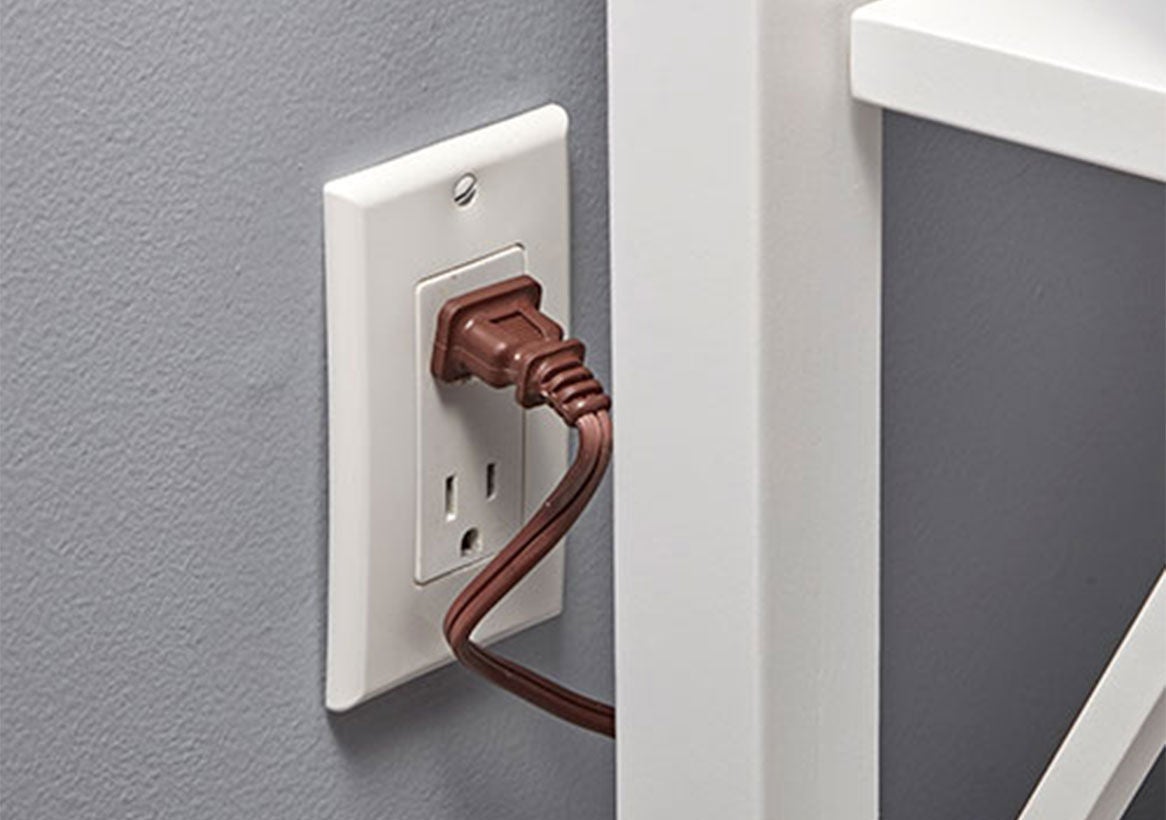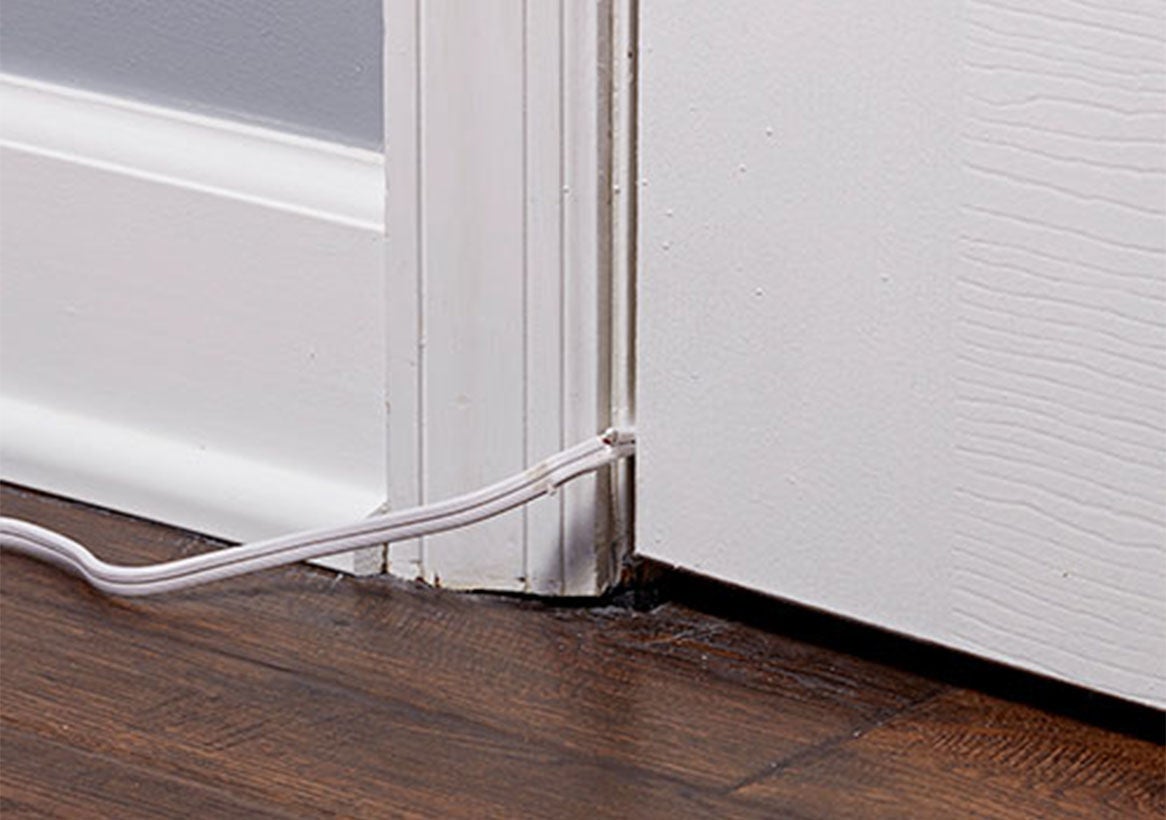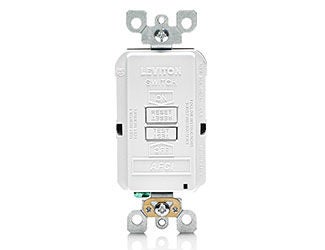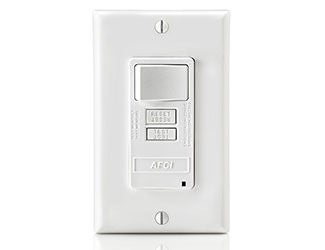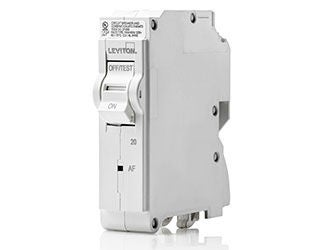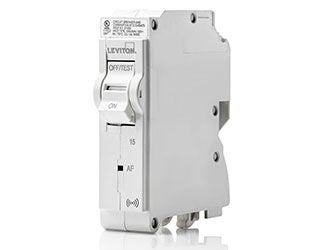From a new construction to a handyman special, every home should have industry-leading arc-fault protection against electrical fires. Leviton safety solutions include AFCI Duplex Receptacles, Blank Face, Combination with Switch, AFCI Circuit Breakers, Dual Function AFCI/GFCI Circuit Breakers, Smart AFCI Circuit Breakers (circuit breakers are designed exclusively for use in the Leviton Load Center).
Superior AFCI Protection. Advanced Technology. Only from Leviton.
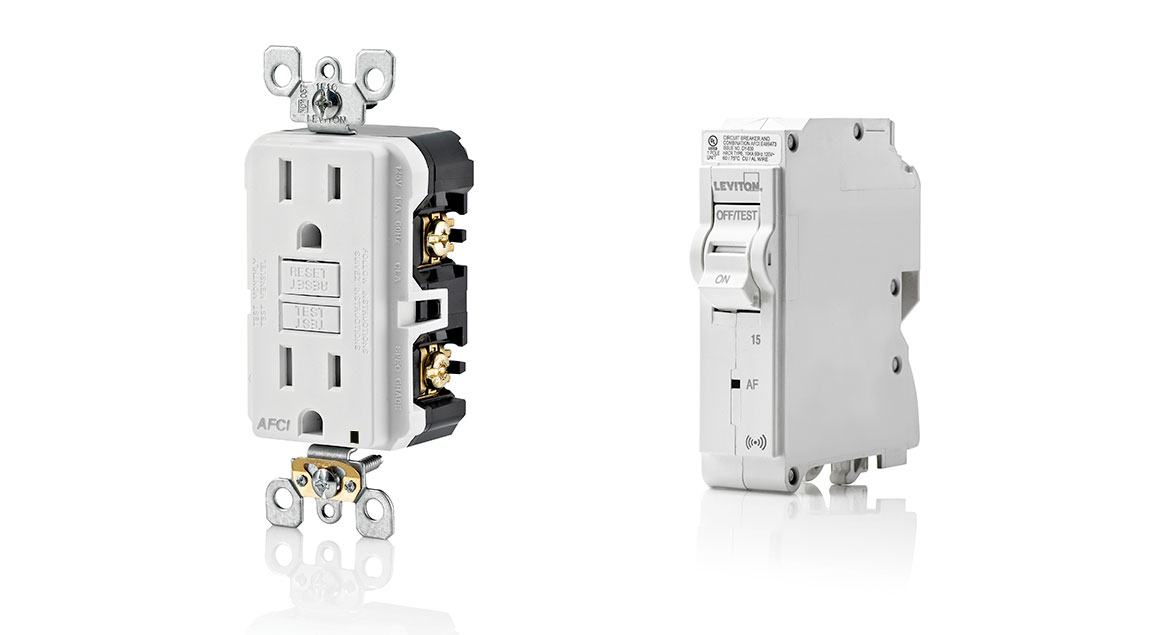
Slim Design
Impact Resistant
Terminals Withstand High-Torque
Patented Reset Lock
Back and Side Wire
Tamper-Resistant Shutters
Dual Function Indicator Light
Standard Self-Ground Clip
Precision trip technology ensures precise tripping, even in extreme temperature ranges
Line-side powered LEDs remain lit, even when a circuit breaker is tripped, for easy identification of the type of fault
Optional Wi-Fi® or Ethernet connectivity with the My Leviton app.
By detecting hazardous arc-faults & responding by interrupting power, Leviton AFCI receptacles & circuit breakers help reduce the likelihood of the home's electrical system being an ignition source of a fire.

Smarter Fire Protection
Choose Leviton AFCIs for superior protection against electrical fires. Solutions include AFCI receptacles and circuit breakers with smart technology for enhanced arc-fault detection.
What are Arc-Faults?
An arc-fault is an unintentional arcing condition in a circuit. Arcing creates high intensity heating at the point of the arc, resulting in burning particles that can exceed 10,000 degrees Fahrenheit and may over time ignite surrounding material such as wood framing or insulation.
There are two types of potentially dangerous arcs – parallel arcs and series arcs.

What Causes Arc-Faults?
Often unseen, arc faults can occur anywhere in the home's electrical system including:
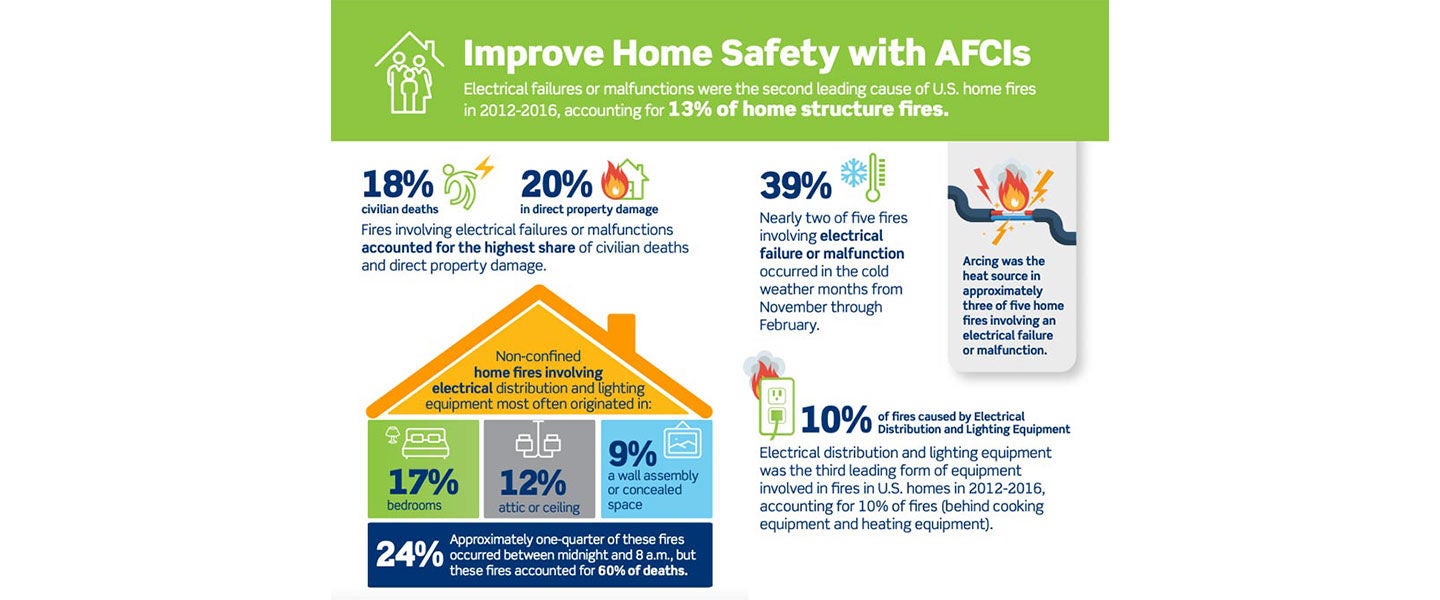
Where to Install
Explore Our AFCI Products
Explore Our Smart AFCI Products
Videos
Leviton AFCIs and Today’s Homeowner
AFCI Circuit Breakers vs Outlets…What’s the Difference?
Prevent Electrical Fires with AFCI Outlets
AFCIs Help Reduce the Danger to Your Home and Family
AFCIs (Arc-Fault Circuit Interrupters) Frequently Asked Questions
The UL Standard for AFCIs defines an arc-fault as an unintentional arcing condition in a circuit (wiring). Arcing creates high intensity heat (may exceed 10,000 degrees Fahrenheit) resulting in burning particles that may over time ignite surrounding material such as wood framing or insulation. Samples of types of arcing that can occur:


There are a wide range of conditions that may cause arcing.
Wire Degradation
- Natural degradation through age
- Humidity or heat
- Extended mechanical stress
- Extended voltage stress
Physical Damage
- Animals chewing through insulation
- Nails, tacks from construction or picture hanging driven into a wall puncturing or damaging a wire(s)
- Extension or power supply cord damage from sharp bends or furniture pressing on or against cords
- General cord damage
- Poor wiring or connection at devices/j-boxes
AFCI outlets are designed to recognize many types of potentially hazardous arc-faults and respond by interrupting power, reducing the likelihood of the home's electrical system being an ignition source of a fire. Often unseen, arc-faults can occur anywhere in the home's electrical system including within walls, at loose electrical connections or within electrical cords accidently damaged by impinging furniture.
AFCI outlets provide arc-fault protection which is extremely important since arc-faults are often unseen and can occur anywhere in the home's electrical system including within walls and at loose electrical connections. The Leviton OBC AFCI outlet offers the benefit of localized TEST and RESET, providing a convenient option to AFCI breakers.
No, an AFCI outlet provides protection against arc-faults. A GFCI outlet provides protection against ground faults. However, they can be used together on the same circuit.
The function of a GFCI is to directly protect people from the potentially fatal hazards of electric shock that could occur if parts of an electrical appliance or tool they are using become energized due to a ground fault. The function of an AFCI is to provide protection against dangerous arc-faults that could initiate an electrical fire, potentially injuring people and damaging homes.
No, every outlet doesn't need to be an AFCI. All AFCIs provide "feed-through" protection, which means they provide protection for all wiring and extensions attached to the load side. If an AFCI replaces the first outlet in the branch circuit, it will provide protection to the remaining outlets on that circuit as well as protection against series arcs on the wiring feeding the AFCI.
Unless you are familiar with your home's wiring, contact an electrician. If you are comfortable with replacing receptacles, to begin, TURN THE BREAKER OFF. Remove the outlet that you believe is the most likely to be first in the circuit. Cap the wires. Turn the breaker back on and test the other outlets. If you chose correctly, all the others will be dead. If you chose incorrectly, put the original outlet back in and try another and repeat the process.
An AFCI breaker is located in the service panel and when tripped, requires the user to reset the breaker at the panel. An AFCI outlet replaces a standard outlet and when tripped, requires the user to reset by pressing a button located on the outlet.
Leviton AFCI outlets are tamper-resistant to meet the latest National Electrical Code® child safety requirements. The shutter mechanism inside the outlet blocks access to the contacts unless a two-pronged plug is inserted.
This is an AFCI that protects against both series and parallel arcing. Current editions of the NEC® require that when using an AFCI breaker it must be a combination type.
The NEC provides options for using either combination type AFCI breakers or OBC AFCI outlets, or receptacles. For more information on code requirements go to www.leviton.com/afci
Yes, all Leviton AFCI outlets meet UL Standard 1699A (Arc-Fault Circuit-Interrupters, Outlet Branch Circuit Type) for AFCI and meet UL Standard 498 for outlet.
The AFCI outlet can be a great alternative depending on the circumstance. AFCI outlets work with any type of wiring and are not dependent on the type of breaker in the panel. They are also easily accessible and have a level of familiarity with users with the TEST and RESET buttons that are also present on GFCI outlets.
Yes, all outlets require a neutral wire to work.
The AFCI outlets are available through electrical distributors, retail and online merchants. Visit www.leviton.com and click "where to buy" for more information.
Yes, they both can be used on the same circuit.
Yes, AFCI outlets can be used in older homes that contain two wire circuits.
All OBC AFCI outlets are rated as 20A feed-through. This means they can protect all outlets on both 15A and 20A branch circuits.
Resources
How Can We Help?
Do you have questions about our AFCIs?


